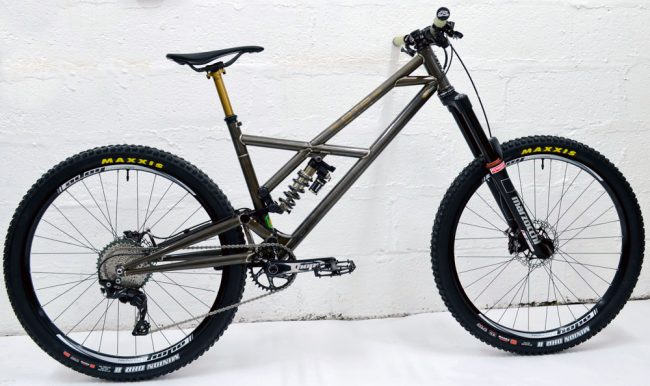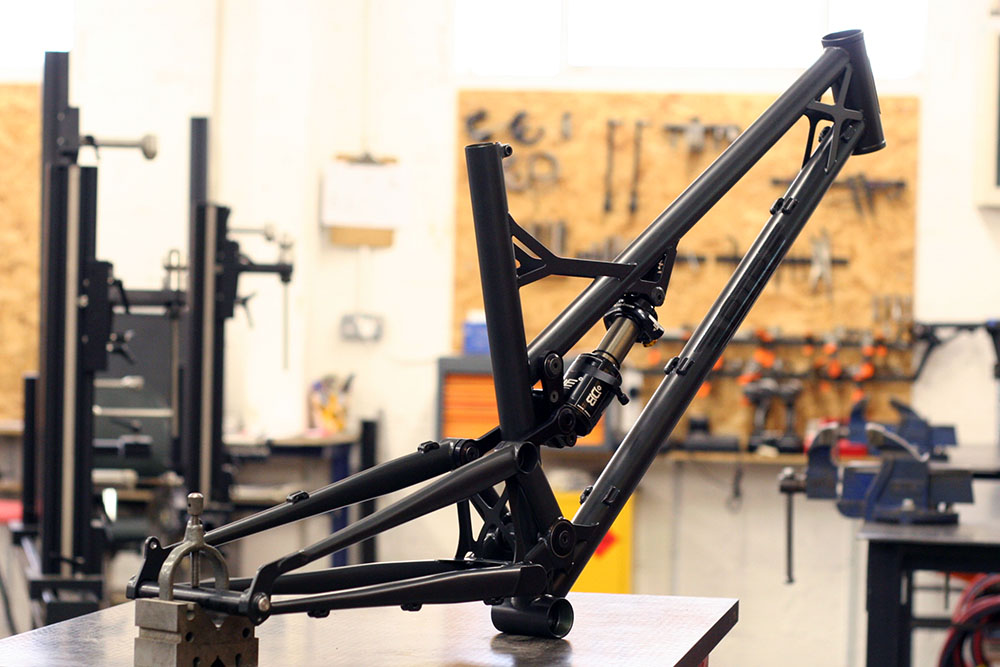

As it is, the Pinner out descends anything in the same wheel size and travel bracket I have ridden to date. BTR has done a great job to blend suspension sensitivity and progression over such a short range of travel, only making me wonder what could be possible if things were extended. I don't know where the desperation for extra bike stiffness comes from forgiveness breeds confidence when things get nasty.
#BTR PINNER PATCH#
The grip the Pinner creates is insane, and it was hard to pinpoint the main reason for this: was it the steel frame, slack head angle, the gently tensioned Hope alloy hoops, the Helm fork, the Onza Aquila tires? I want to say it was a combination of all of the above working in harmony if everything can flex in tune with the following component from the tires contact patch up to the rider, then the sidewalls will take the smoothest application of load and keep on tracking instead of skipping.Īt the back of the bike, it's a similar story the Pinner holds a direct line charging into the nastiest angled and craggy rock. at least the bottom out bumper on the EXT does a good job when you mess up. The confident front-end of the bike and easy riding characteristic can lead you into a false sense of security, letting you wind it up and then smash into some things way too hard. But this slight lack of stability is clawed back by an incredibly forgiving ride minimizing harsh feedback into the rider. Increasing the speed and corner radius, the short chainstays made it more unstable than other bikes, but then I remembered I was riding a 130mm travel, 27.5" bike. The bike banks easily into sharp corners and changes direction from with ease – one of the easiest bikes to carve around tight corners I have found. Heading down the hill, the Pinner opens the throttle quickly and the slack head angle calls to charge. There are no options to adjust the bikes geometry using linkage bolts or flip chips, but as the frames are all built to order, there is a good chance you can get something a little bit different if you are really set on specifics and ask nicely: headtube and seat tube length, head angle and reach/stack are easy changes, but anything near the linkage and swingarm area can get a little more difficult to change. The chainstays are kept very short at 425mm on all frame sizes, and the seat tubes are also cut short on the large-sized model I tested, I have never seen so much seat post extended from the clamp having, with only 25mm left to the minimum insertion line on the 150mm drop Transfer post. The frame's reach numbers increase by 25/20mm per frame size from 430, 455, 480 and 500mm with the stack height and headtube length also increasing.

The slack 64º head angle is opposed by the steep 76º effective seat tube angle.
The Pinner has some extreme numbers that dictate its intended use and proves it's from some mad people on a rainy little island. The frame shown here, including the integrated seat clamp, internal routing and the EXT Storia, no ISCG mount, totals £3000 GBP on the nose, but buying the EXT shock separately would set you back around £800. The bikes are built to order, and there are a number of options so you can get exactly what you want to shred on your trails.

More info: The Pinner is available as a frame-only with options including an EXT Storia LOK shock in the 'Burf Edition,' or with a Cane Creek DB Coil in the 'Tam Edition.' Starting at £2400 / $3243 USD (approx.) depending on the final touches, the Pinner isn't cheap, but you are buying a meticulously handcrafted bike from two people earning a living wage in the UK. Weight: 16.13 kg / 35.56lbs - as pictured, size large, inc. Frame material: Reynolds 631 and 853 front end, Columbus stays


 0 kommentar(er)
0 kommentar(er)
